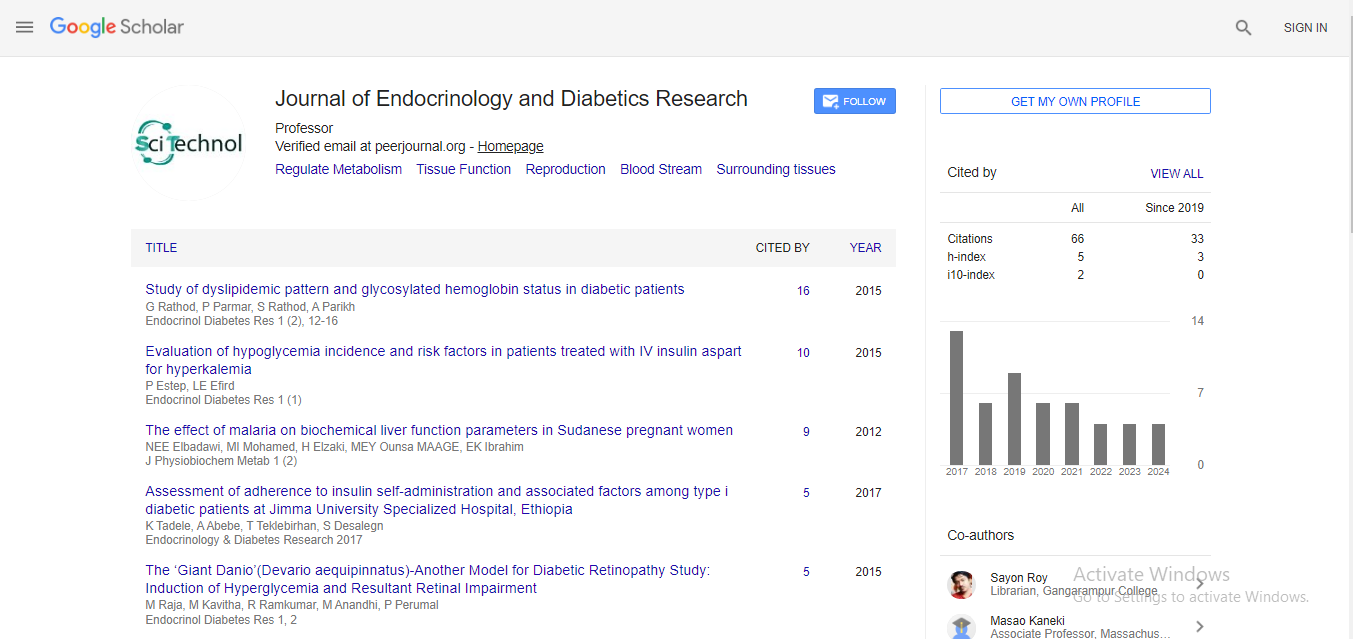Research Article, Ecdr Vol: 5 Issue: 2
Vitamin D Deficiency in Relation to Insulin Resistance Associated with Nonalcoholic Fatty Liver Disease among Bangladeshi Prediabetic Subjects
Israt A Hossain1*, Mijanur R Shah2, Sayela Afroz3 and Liaquat Ali1
1Department of Biochemistry and Cell Biology, Bangladesh University of Health Sciences, Dhaka, Bangladesh
2Department of Microbiology and Immunology, Bangabandhu Sheikh Mujib Medical University, Dhaka, Bangladesh
3Department of Biochemistry and Molecular Biology, Rajshahi University, Rajshahi, Bangladesh
*Corresponding Author : Israt A Hossain
Department of Biochemistry and Cell Biology
Bangladesh University of Health Sciences
Dhaka, Bangladesh
Tel:+88- 02-9010654
Fax:+88-02-8055312
E-mail: israt.ru84@buhs.ac.bd
Received: February 27, 2019 Accepted: April 25, 2019 Published: May 07, 2019
Citation: Hossain IA, Shah MR, Afroz S, Ali L (2019) Vitamin D Deficiency in Relation to Insulin Resistance Associated with Nonalcoholic Fatty Liver Disease among Bangladeshi Prediabetic Subjects. Endocrinol Diabetes Res 5:2. doi: 10.4172/2470-7570.1000141
Abstract
Abstract Objectives: The present study was aimed to examine the association of hypovitaminosis D with nonalcoholic fatty liver disease (NAFLD) with concomitant prediabetes and to explore whether this association is mediated by insulin resistance during this disorder. Methods: We studied 151 prediabetic subjects consisting of 55 impaired fasting glycemia (IFG) and 96 impaired glucose tolerance (IGT) who came in Bangladesh Institute of Health Sciences General Hospital, Dhaka, Bangladesh to diagnose their metabolic evaluation from April 2012 to June 2013. Prediabetes was confirmed by 2-sample OGTT based on WHO Group Study Criteria. NAFLD was examined by upper abdomen ultrasonography comprising into non NAFLD (n=84; M/F, 47/37) and NAFLD (n=67; M/F, 38/29) groups. Serum insulin and 25-hydroxyvitamin D [25(OH)D] were analyzed by ELISA. Insulin resistance (HOMA-IR) was calculated by the homeostasis model assessment. Results: Compared to the non NAFLD counterparts, NAFLD subjects had significantly lower levels of [25(OH)D] (P<0.001) as well as significantly higher levels of HOMA-IR (P<0.001). On binary logistic regression analysis, HOMA-IR (OR: 2.103, 95% CI: 1.0114.376, P=0.047) and [25(OH)D] (0.897, 0.857-0.939, P<0.001) were found to be significant determinants of NAFLD when adjusted the major confounders of age, waist circumference, HbA1C, and triglyceride respectively. Pearson’s correlation analysis showed significant negative correlation of [25(OH)D] with HOMA-IR in both NAFLD (r=-0.276, P=0.032) and non NAFLD (r=-0.160, P=0.049) subjects. Multiple linear regression analysis showed significant negative association of HOMA-IR with [25(OH)D] (β=-0.371, P=0.001) in NAFLD subjects after adjusting potential cofounders of age, waist circumference, HbA1C and serum triglyceride respectively. Conclusions: Hypovitaminosis D seem to have an association with NAFLD and this relationship is mediated by insulin resistance which considered the pathophysiological determinant of prediabetes.
 Spanish
Spanish  Chinese
Chinese  Russian
Russian  German
German  French
French  Japanese
Japanese  Portuguese
Portuguese  Hindi
Hindi 


